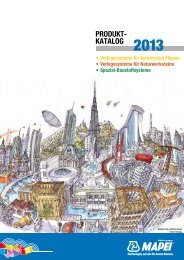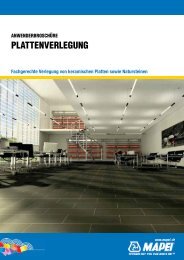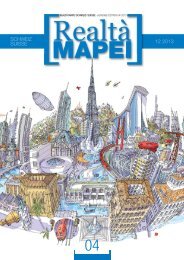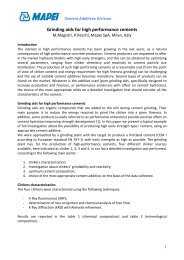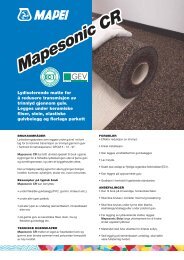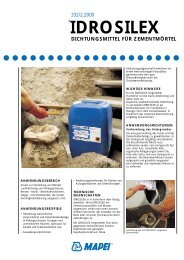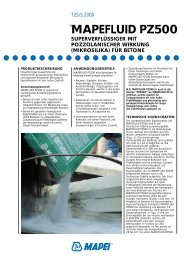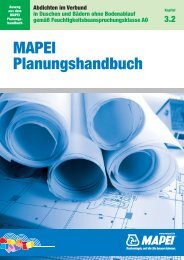WATERPROOFING TERRACES AND BALCONIES - Mapei
WATERPROOFING TERRACES AND BALCONIES - Mapei
WATERPROOFING TERRACES AND BALCONIES - Mapei
You also want an ePaper? Increase the reach of your titles
YUMPU automatically turns print PDFs into web optimized ePapers that Google loves.
04<br />
Technical Notebook<br />
<strong>WATERPROOFING</strong><br />
<strong>TERRACES</strong> <strong>AND</strong> <strong>BALCONIES</strong><br />
out jut out for a breathtaking view over a mountain creek, one of the most<br />
remarkable examples of modern architecture.<br />
In order for terraces and balconies to become a space where everybody<br />
may enjoy their spare time, we must not limit our attention to simply applying<br />
a waterproofing system; we must also consider a number of other aspects<br />
such as structural stresses, the correct slope, the way they blend in and<br />
particular care for the joints. These and other items will be discussed in<br />
the following pages.<br />
3. MECHANICAL <strong>AND</strong><br />
PHYSICAL STRESSES<br />
3.1 STRUCTURAL DEFORMATION <strong>AND</strong> JOINTS<br />
The cementitious conglomerate in use since ancient times is still today<br />
one of the most widely used construction materials in the building<br />
industry. The combination of cement, inert material and water in the right<br />
proportions forms a strong, compact composition which, when used<br />
in conjunction with steel bars, forms an excellent construction system:<br />
reinforced concrete.<br />
As with all materials, a cementitious conglomerate has certain<br />
chemical and physical characteristics directly connected to particular<br />
types of deformation, some of which are manifested immediately,<br />
while others only show up with time, generated especially by the<br />
curing of the conglomerate itself. Structures are subjected to various<br />
types of deformation (thermal, dynamic, shrinkage, etc.) during<br />
their working life and every type of deformation must be carefully<br />
assessed during the design phase.<br />
As far as the behaviour of terraces and balconies is concerned,<br />
it is common knowledge that these structures are subjected to all<br />
the types of deformation mentioned above, which act both on the<br />
Fig. 3.1 - Diagram of the deformations of a suspended<br />
floor slab subjected to point loads.<br />
Fig. 3.2 - Diagram of the deformations of a supported<br />
beam subjected to evenly-distributed loads.<br />
Fig. 3.3 - Diagram of the deformations induced by<br />
drops in temperature.



